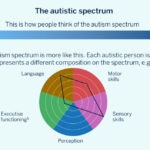The financial institution is developing an internal manual to give visibility to the reality of the people on the autism spectrum in the workplace and society. The goal is to make all professionals at the bank aware of this neurodivergence and promote a working environment that facilitates the integration of this group, makes the most of their strengths and understands the barriers they face.

BBVA’s commitment to diversity puts the focus on autistic people to promote the inclusion of this group in its workforce. The bank is launching an internal guide to raise awareness about the reality of people on the autism spectrum, promoting best practices and tips to improve their adaptation, breaking down stereotypes and actively creating a fully inclusive work environment.
“At BBVA, we firmly believe that diversity and inclusion not only enrich our organization, they also push us to be a more accurate reflection of the society we serve. Therefore, we have made the commitment to create a work environment where all people, regardless of their individual characteristics, can develop their full potential,” said Cristina Gabriel, Head of Diversity at BBVA.
The aim of this manual is to raise awareness of Autism Spectrum Condition (ASC) in order to facilitate the integration of autistic people in the work environment. “We understand that what is most important for integration is awareness and knowledge. With this guide, we are taking a first step toward moving forward in various aspects, offering a series of recommendations to employees who interact with autistic people at work to improve their understanding, and thus be able to establish a friendly, healthy and safe environment for everyone,” she added.
Autism Spectrum Condition
Under the umbrella of neurodivergence, Autism Spectrum Condition is a neurological and developmental condition that affects the way a person perceives and socializes with other people, which can have an impact on communication, behavior and sensory processing. It manifests in different ways in each individual, and may involve differences in social interaction, repetitive behavior patterns, specific interests and atypical sensory sensitivity. It is not a disease, but a natural variation of neurodiversity. “Every autistic person is different, and therefore needs for support can vary, and also evolve over life. Some people can handle the challenges associated with complete autonomy and others require partial or total support, depending on the case. An example of this is the fact that some autistic people live independently from an early age, while others have permanent support for one or more daily activities,” indicated Senaida Hernández from the Quantum team at BBVA, and a member of the working group that developed the internal guide.

Autism Spectrum from CAMHS Professionals, UK
It is called a ‘spectrum’ because it covers a wide range of characteristics and abilities. Within some of the common characteristics they may share, autistic people can differ in areas such as language, social interaction, motor or sensory skills, executive functioning and perception.
“Although we do speak in linear terms when we talk about the level of support that an autistic person may need, it is important to break away from the idea that autism is only described by this linear category. It is also important to understand that autism is not necessarily associated with a recognized disability. This will depend on the limitation an autistic person has when doing their daily activities and interacting with the world around them,” she stressed.
Workplace inclusion
A clear example of the integration of people on the autism spectrum is the collaboration between BBVA Mexico and Specialisterne, a social enterprise dedicated to the inclusion of people diagnosed with neurodiversity at the workplace. This initiative is allowing autistic people to work in technological areas of the bank.
Also, in Spain, BBVA is collaborating with Fundación Eurofirms to train people managers and those in charge of selection processes on recruiting autistic people. With these steps, the bank aims to break down the employment barriers that people on the autism spectrum face, and integrate these professionals to provide them a work environment where they can develop their full potential.